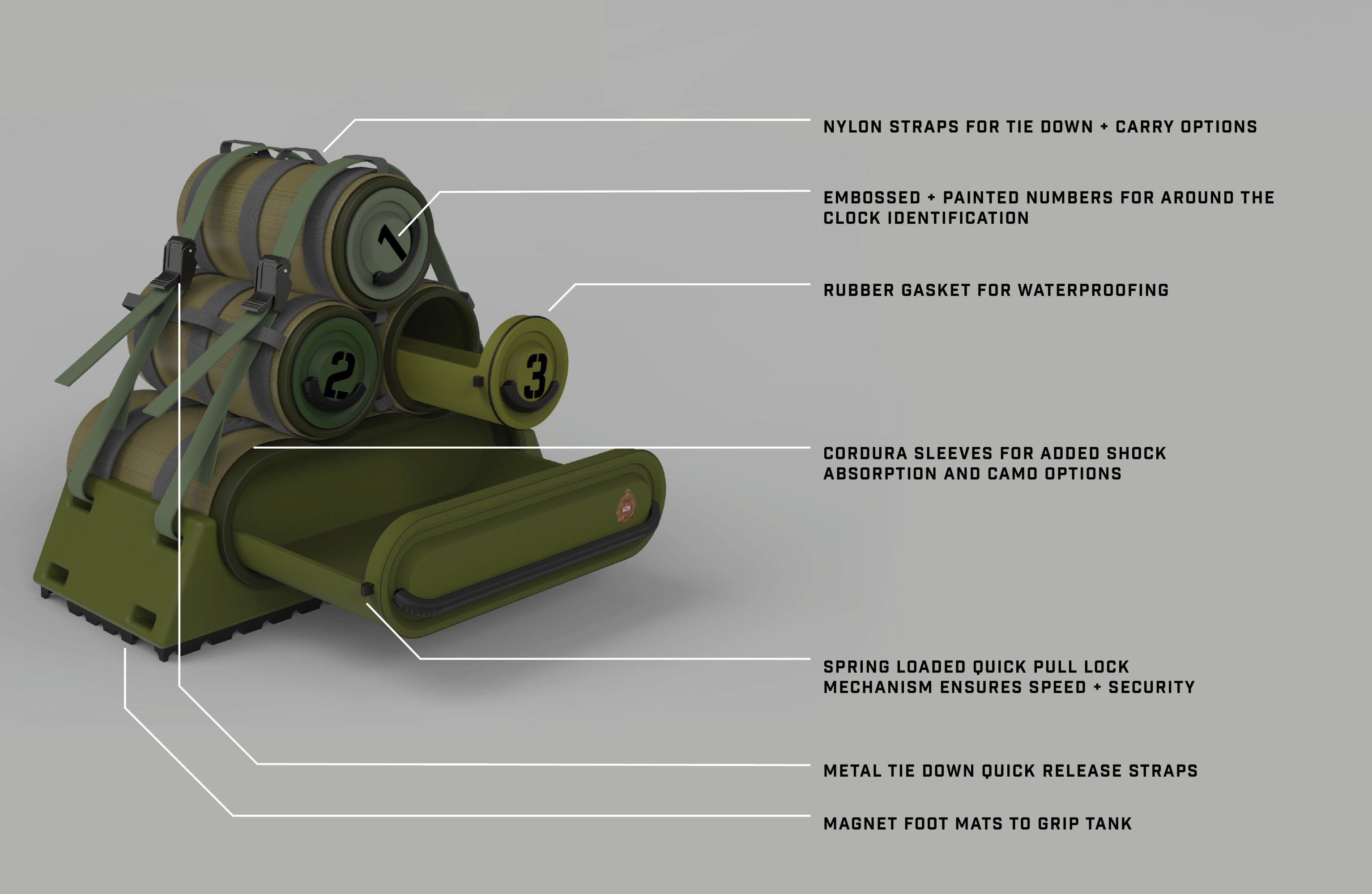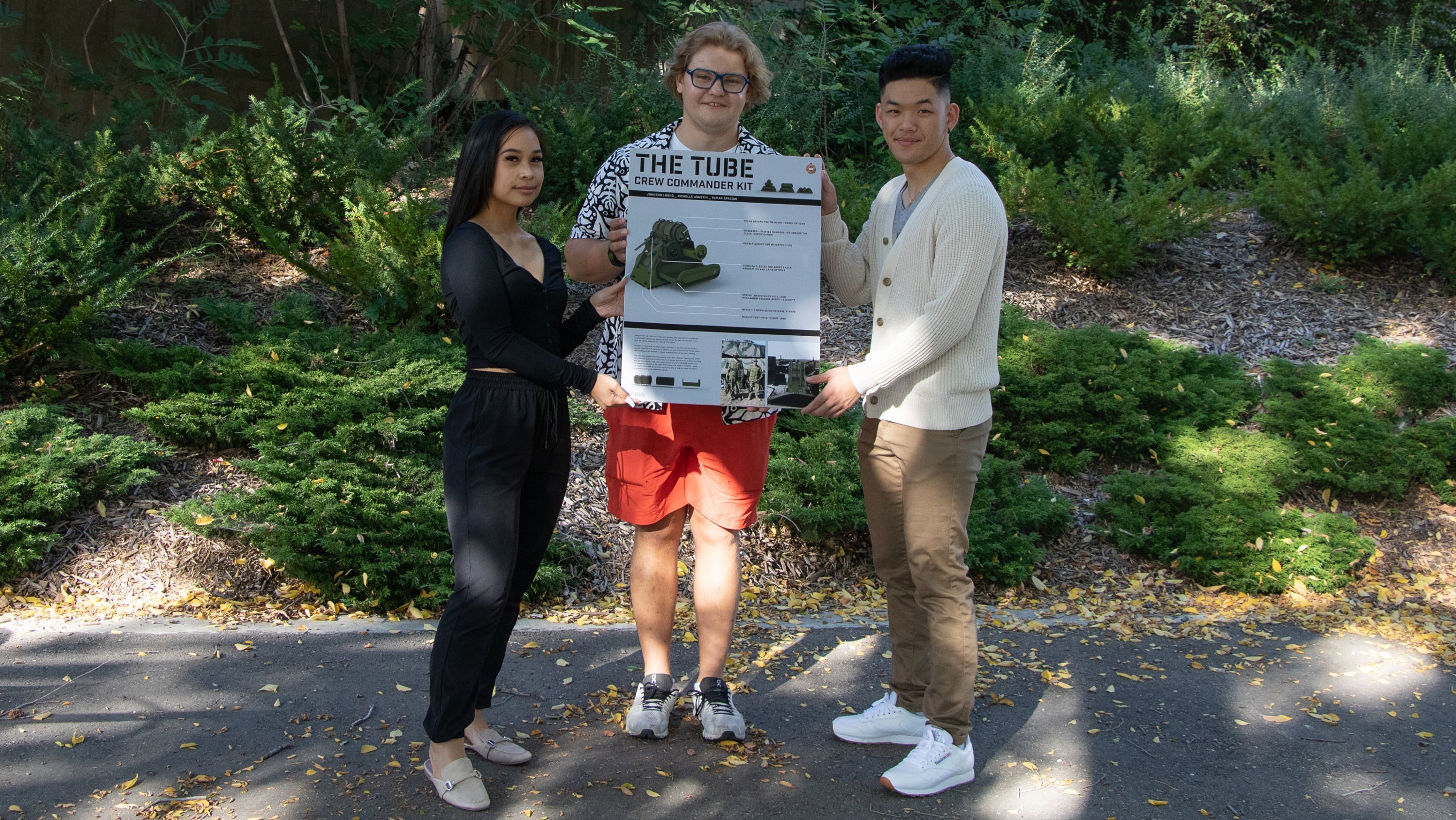As an undergraduate, Kai Keewatin was torn between two passions: graphic design and his long-held dream to join the Canadian Armed Forces.
In the second year of his design program at the University of Alberta, he did finally enlist with Lord Strathcona’s Horse in Edmonton, graduating in his military uniform in 2016.
He is now a captain with the regiment, but design principles are never far from his mind. Aware of this interest, Keewatin’s commanding officer asked him to devise a better commander’s kit for a tank — essentially a bag that holds notebooks, binoculars, GPS, maps and anything else required in the field.
“A commander’s kit is something that doesn’t really exist,” said Keewatin, adding that commanders tend to just throw gear loosely into a helmet bag.
“I was just thinking, there’s got to be a way to apply some finer level of design to this to create something more functional.”
The central challenge is that there is simply no room inside a tank for such a kit. It has to fit neatly between the two hatches on the outside turret. It also has to be durable enough to withstand temperatures of -40 C to 40 C, waterproofed and raised so if it gets wet, it won’t freeze to the turret in the cold.
Looking for help, Keewatin took the challenge back to his alma mater, confident students in the Department of Art and Design could come up with innovative ideas.
And they did.
It’s certainly not the first time fourth-year industrial design students have taken on real-world assignments, said Design 502 instructor Greig Rasmussen.
Two years ago, they designed temporary storage facilities for people experiencing homelessness in Edmonton. More recently, they submitted ideas for the upcoming renovation of the Students’ Union Building’s main floor, based on surveys of student preferences.
But this is the first time they’ve been approached by the military.
“I was blown away by their work,” said Keewatin. “Even with the pandemic, they managed to put together some really cool designs. Everyone we showed it to in the regiment absolutely loved what they came up with.”
Once divided into groups, students surveyed crew commanders with detailed questions on what they’d like to see in a kit.
“Part of the design brief was that it had to be customized for each commander, since each one has certain things they want together,” said Rasmussen.
“It's so important for students to have real clients. We want to get past the idea of just designing cool stuff — they need to meet the client’s needs.”
One of the more unconventional designs was a pyramid of tubes connected with Velcro, each big enough to stow a piece of gear.
“You can either detach one and bring it into the tank, or strap it on and take it to a field meeting,” said Rasmussen.

The pandemic did impose some limits on experimentation, because the students didn’t have access to material workshops and had to settle for computer renderings.
At the same time, working at home meant common objects close at hand provided inspiration.
“We had badminton tubes in our rooms,” said student Tomas Spasiuk, whose group worked on the tubular pyramid design. “If you’re trying to demonstrate how things would work — with, for example, one smaller tube sliding inside the other — it helps the team riff off of it.”
Other designs included traditional bag forms, double-suitcase styles and even “fancy executive overhead-bag suitcases with different compartments,” said Rasmussen.
The students were also given an assignment by Keewatin to design “challenge coins,” used to recognize outstanding achievement and participation in significant events such as campaigns, tours of duty, military exercises and disaster relief efforts.
The designs have now been submitted to Keewatin’s unit, where they will likely “cherry pick” ideas to produce their own version, said Rasmussen.
“They do have some very good in-house tack shops at the military base.”
Given the success of the collaboration, Rasmussen said he is hoping for some new assignments from the military this fall.
“They were fantastic clients,” said Spasiuk, “because they knew the process and they knew how to give good feedback, which is so valuable.
“It kind of made me fall in love with product design. You take this idea someone is excited about, and then you get to give them something that they can actually use.”
